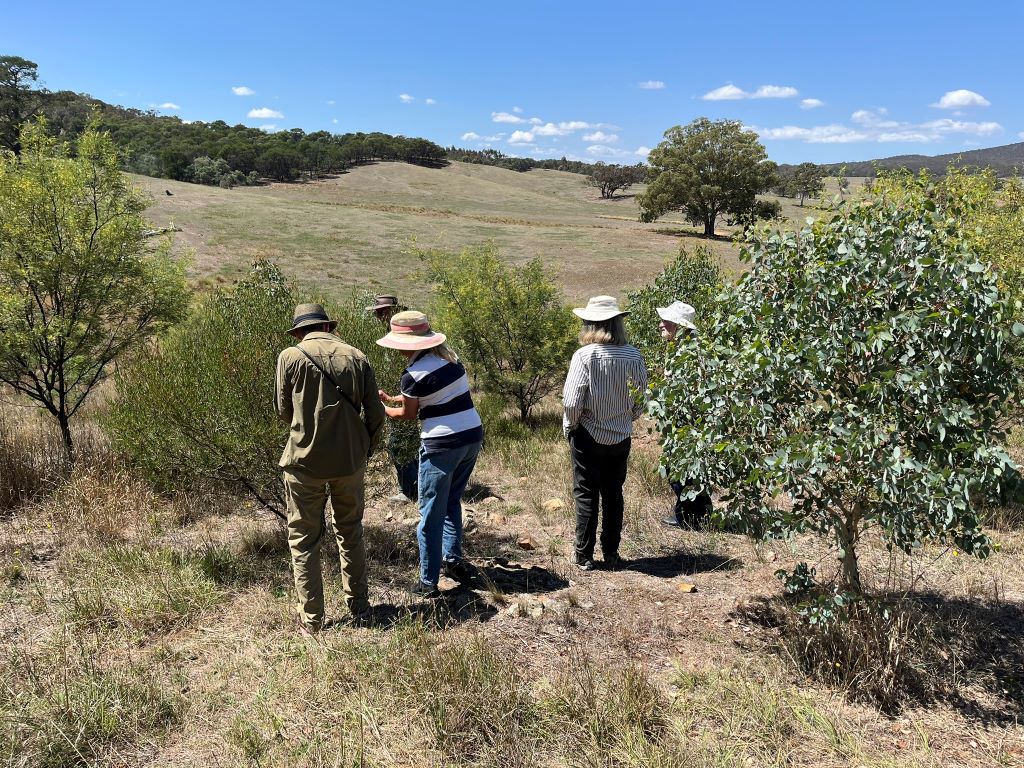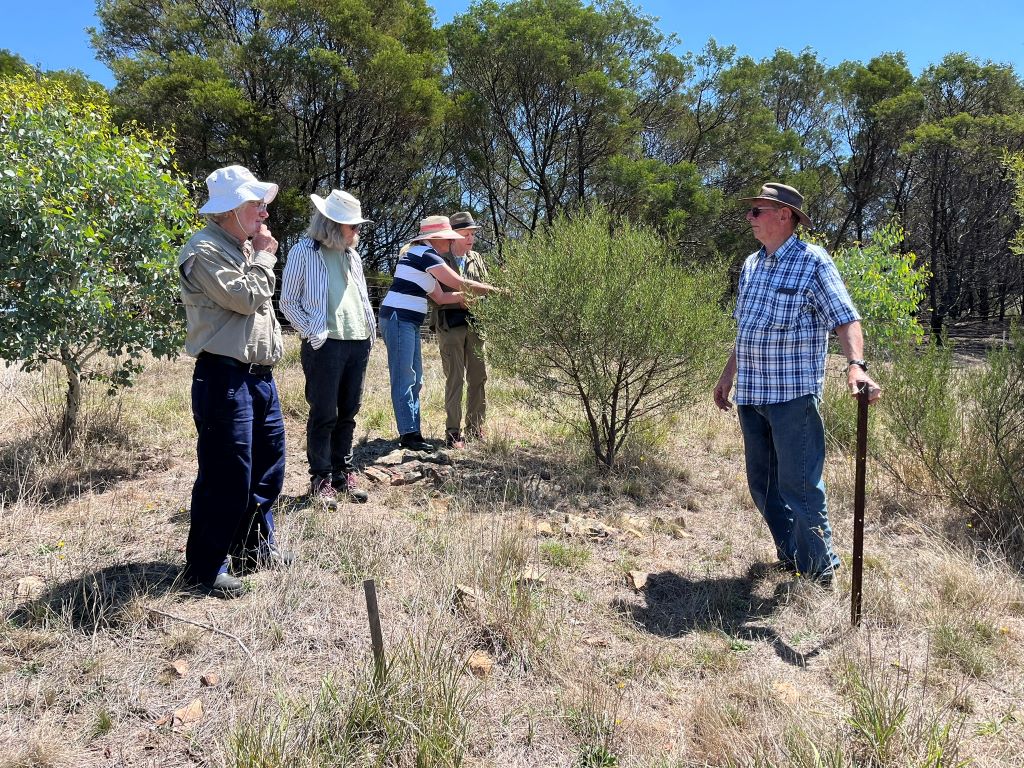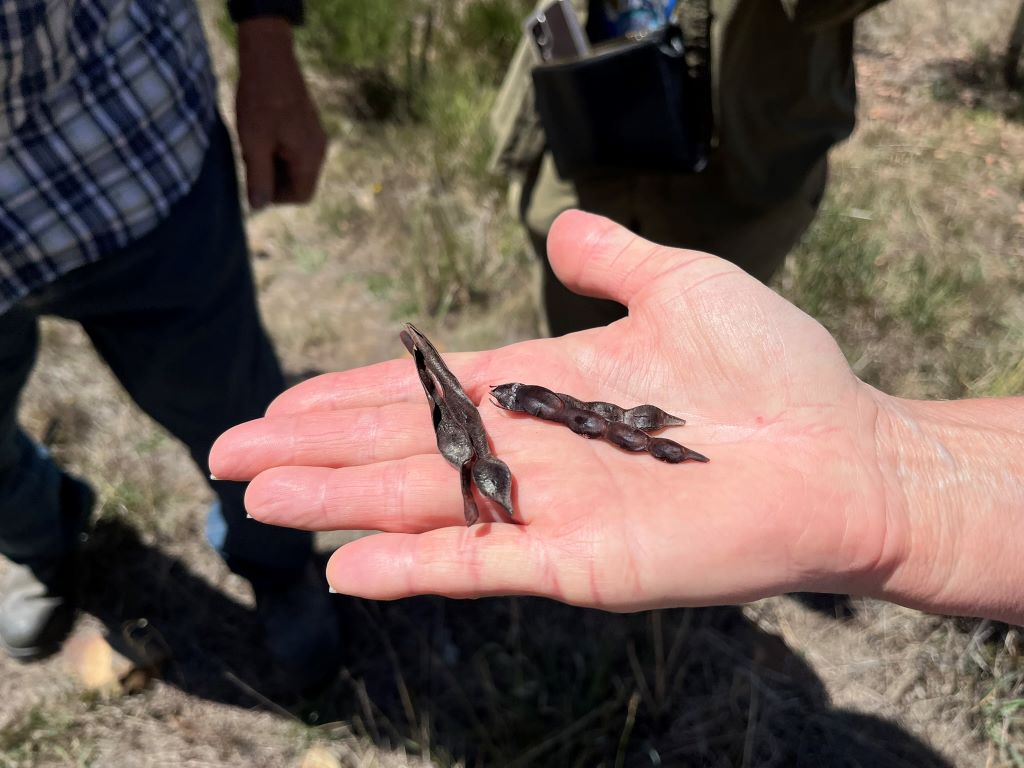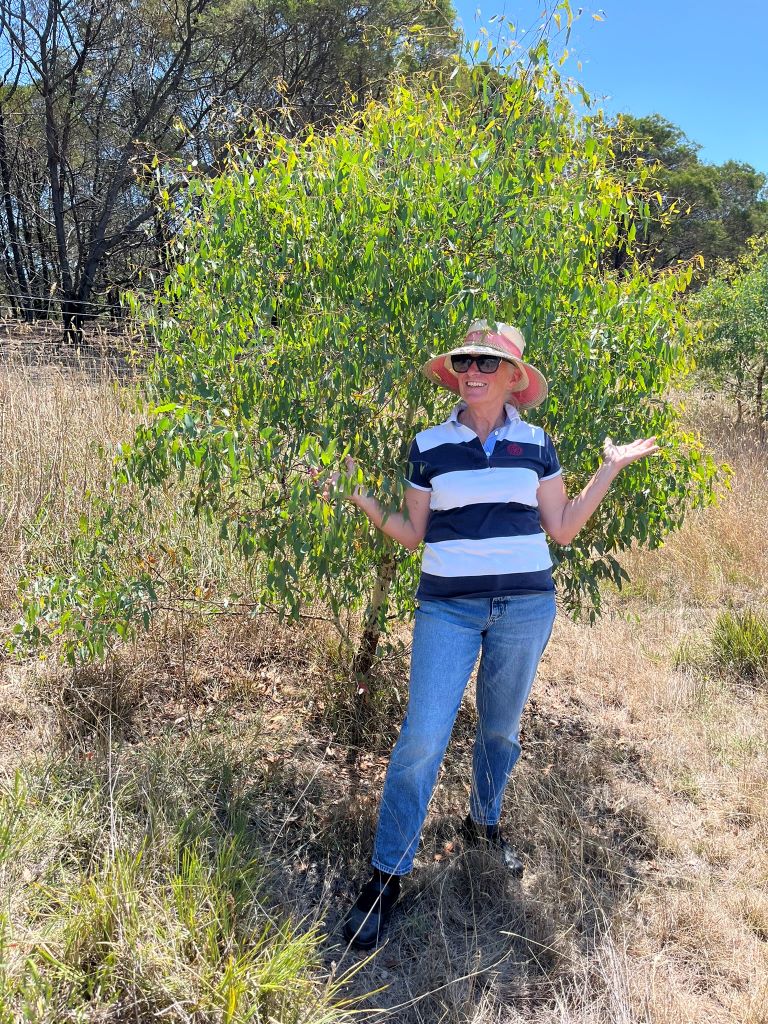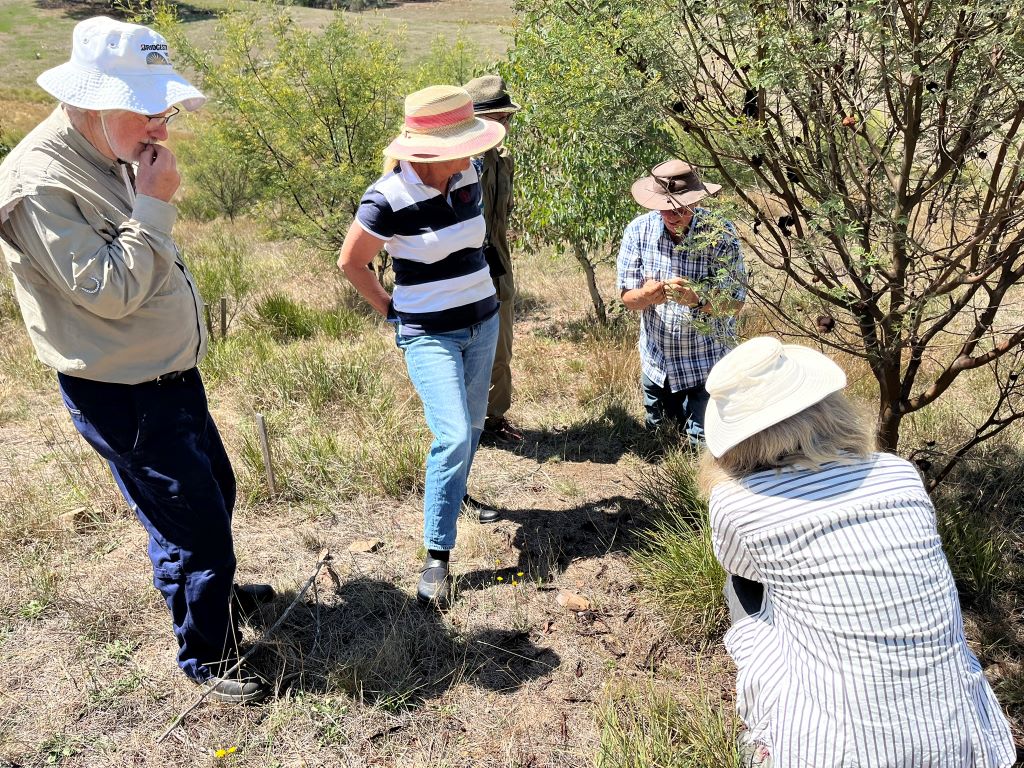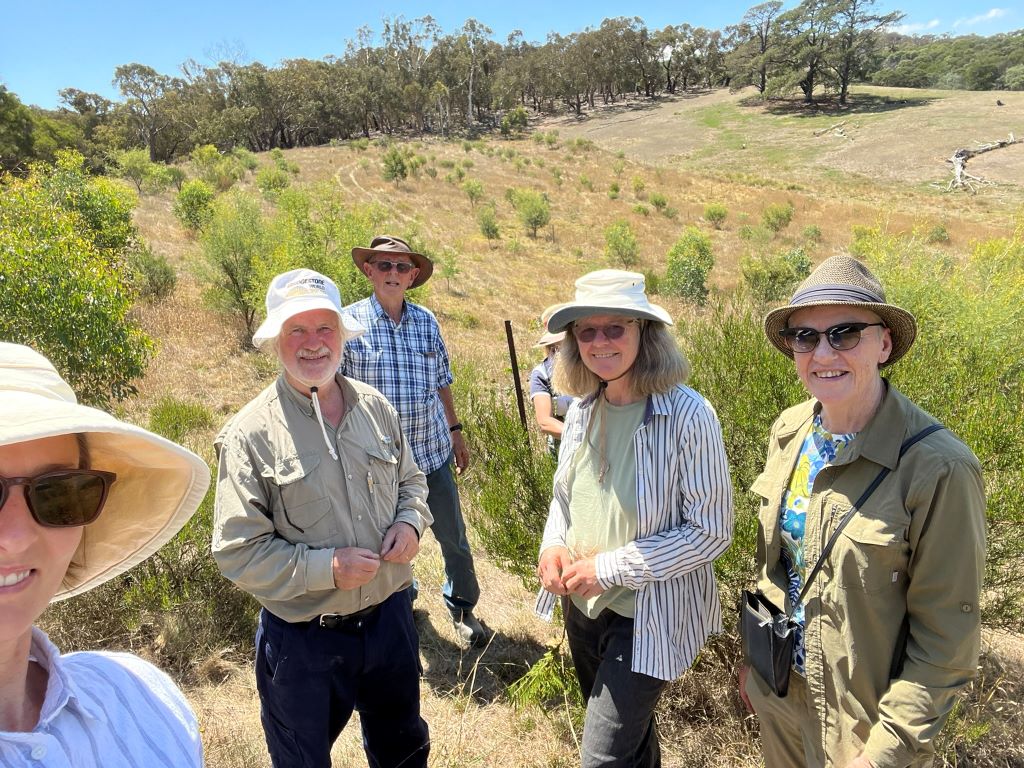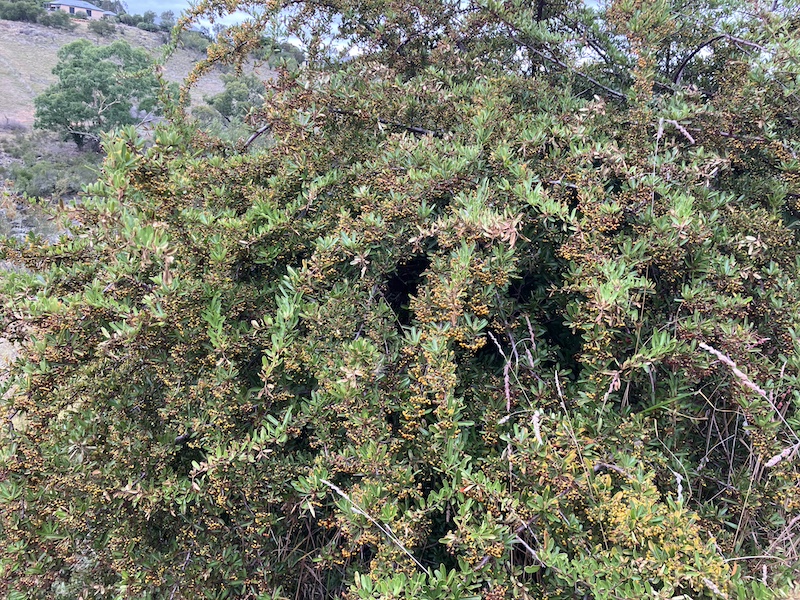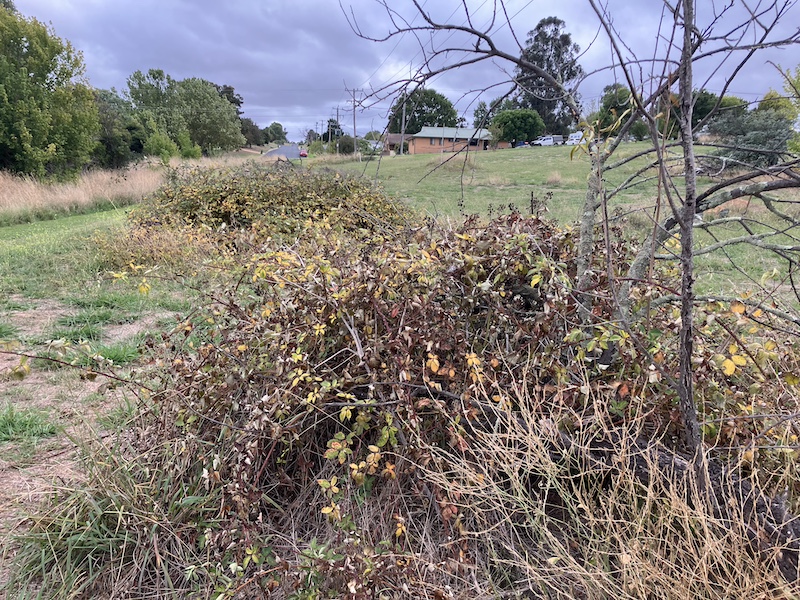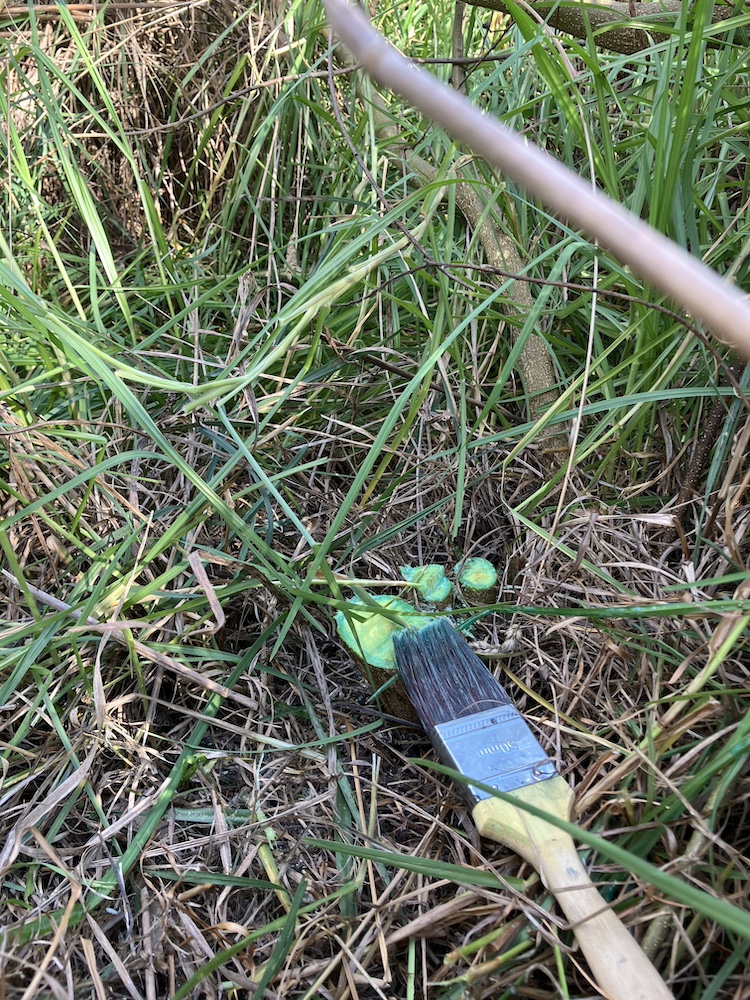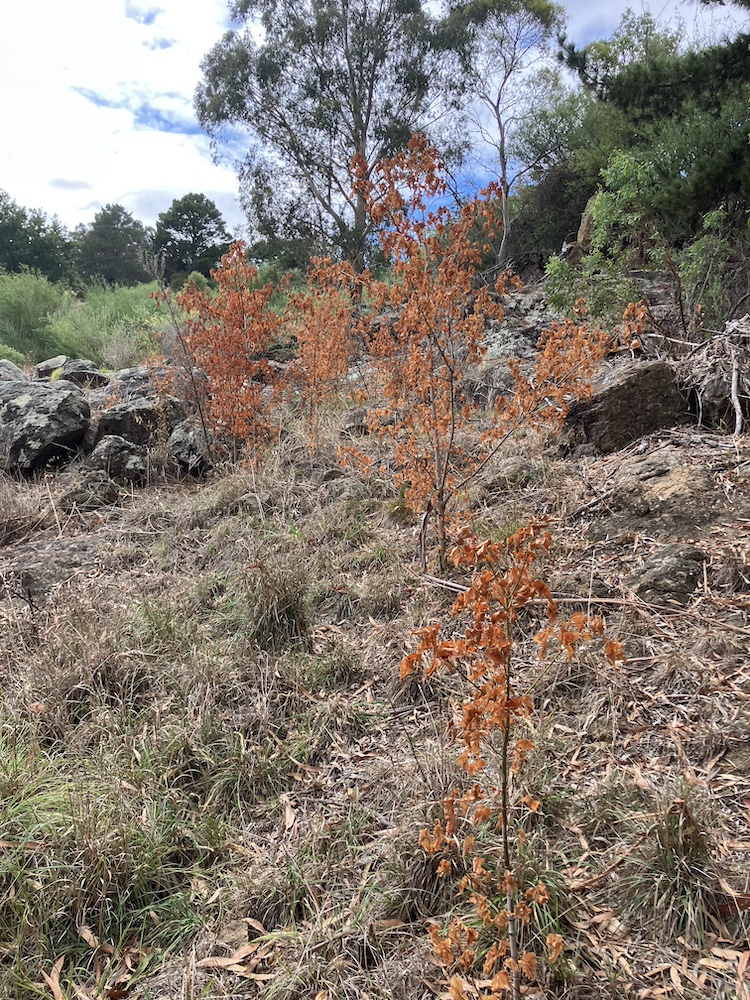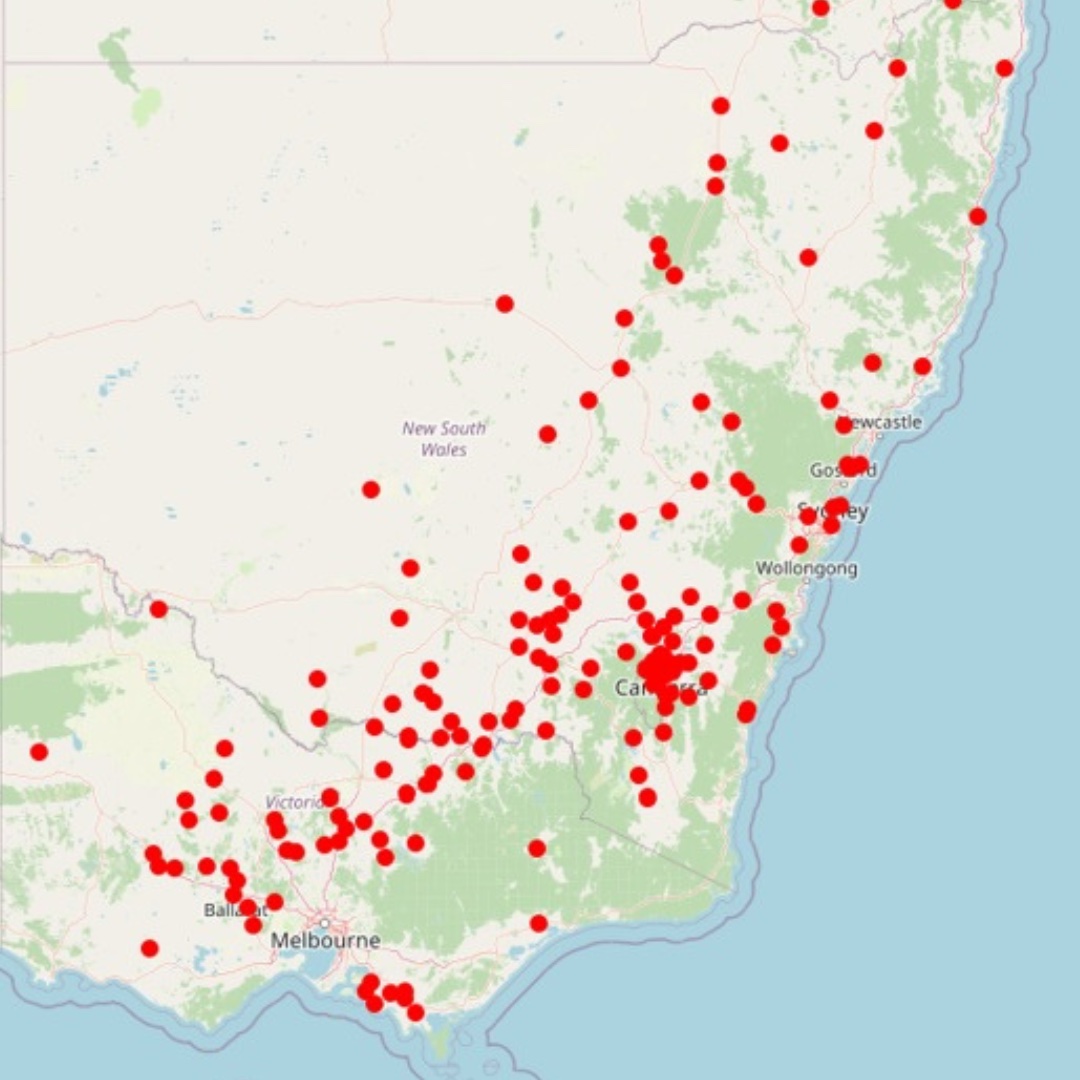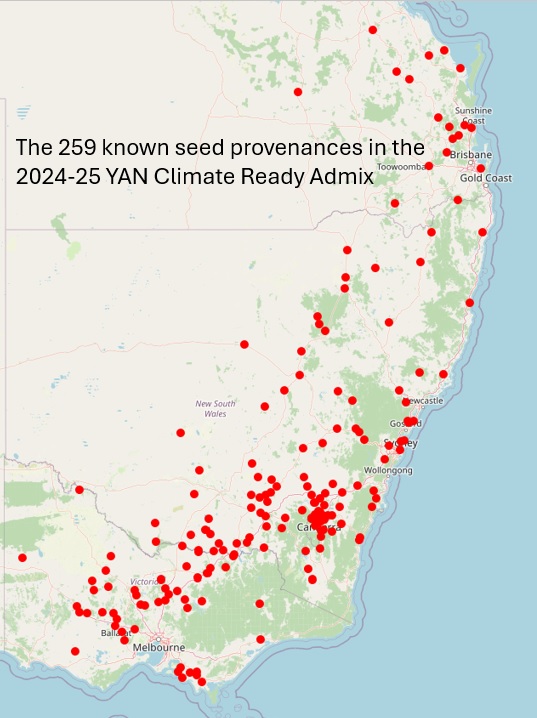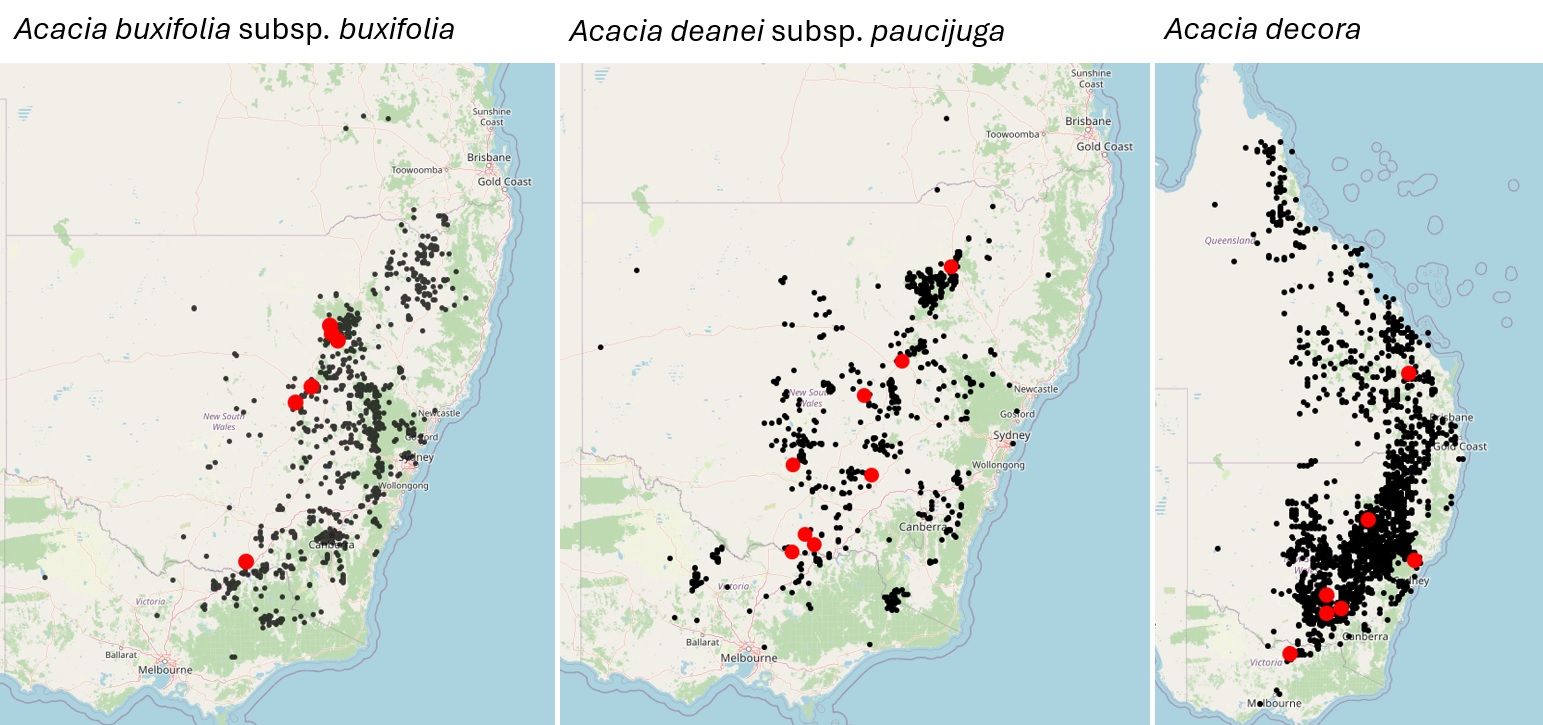The Yass Area Network of Landcare Groups (YAN) is proud to announce that Sue McIntyre, a local landowner and Vice-President of Murrumbateman Landcare Group (MLG), has been awarded the 2025 John Betts Landcare Award. This honour recognises her outstanding and long-term dedication to Landcare, her invaluable contributions to the local landscape, and her unwavering commitment to ecological conservation.
The John Betts Landcare Award commemorates the memory of John Betts, a founding member of YAN, who made an exceptional contribution to Landcare in the Yass region. Each year, the YAN committee selects a recipient who embodies this same spirit of dedication and leadership in Landcare. This year, we are delighted to recognise Sue’s remarkable work.
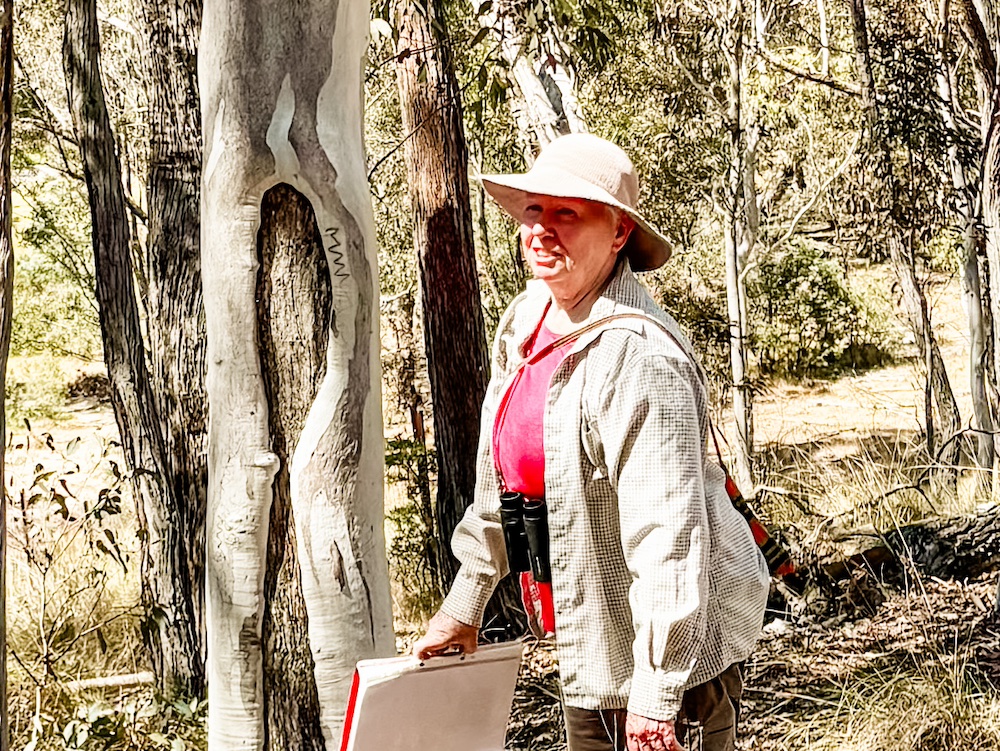
A Lifelong Commitment to Landcare
Sue McIntyre’s contribution to Landcare in the Yass Valley has been invaluable. Her deep passion for grassland conservation, professional ecological expertise, and generosity in sharing her knowledge have inspired and educated many. As fellow team members Sonya Duus and Gill Hall note, 'Sue’s contribution to Landcare in the Yass Valley has been invaluable; her passion for caring for grassland environments, her professional ecological expertise and her willingness to share her knowledge have inspired many.' She has been a driving force in Landcare across YAN groups, offering her time to answer questions, engage in discussions, attend meetings, host field days, present at public forums, write articles, provide feedback on written pieces, and organise guest speakers. Her dedication and insight are widely admired.
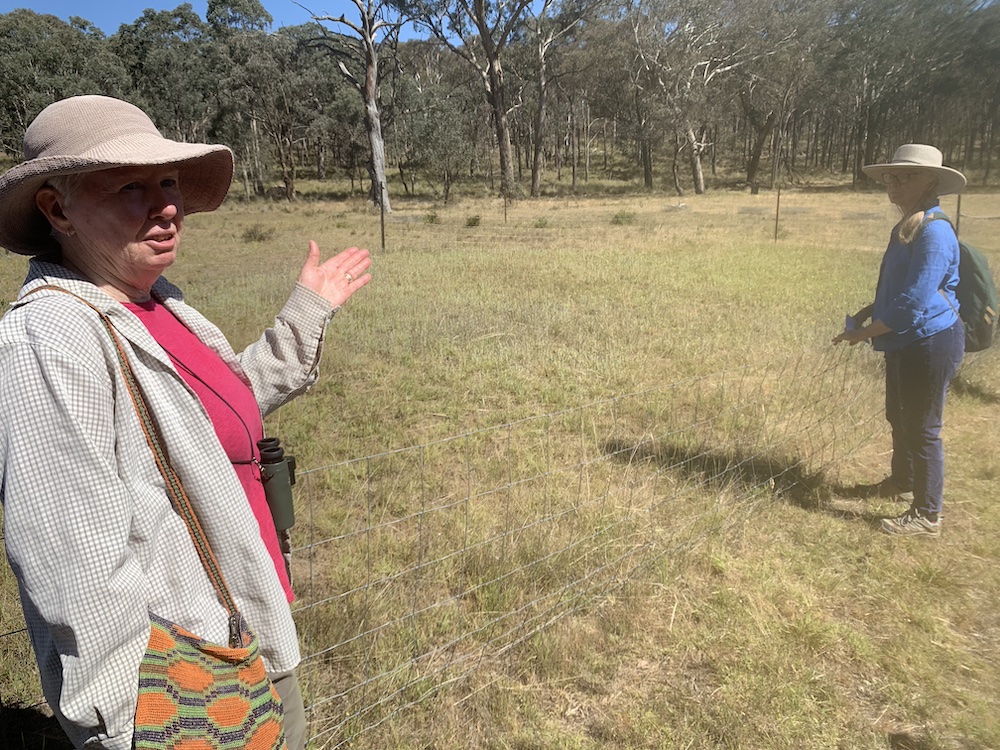
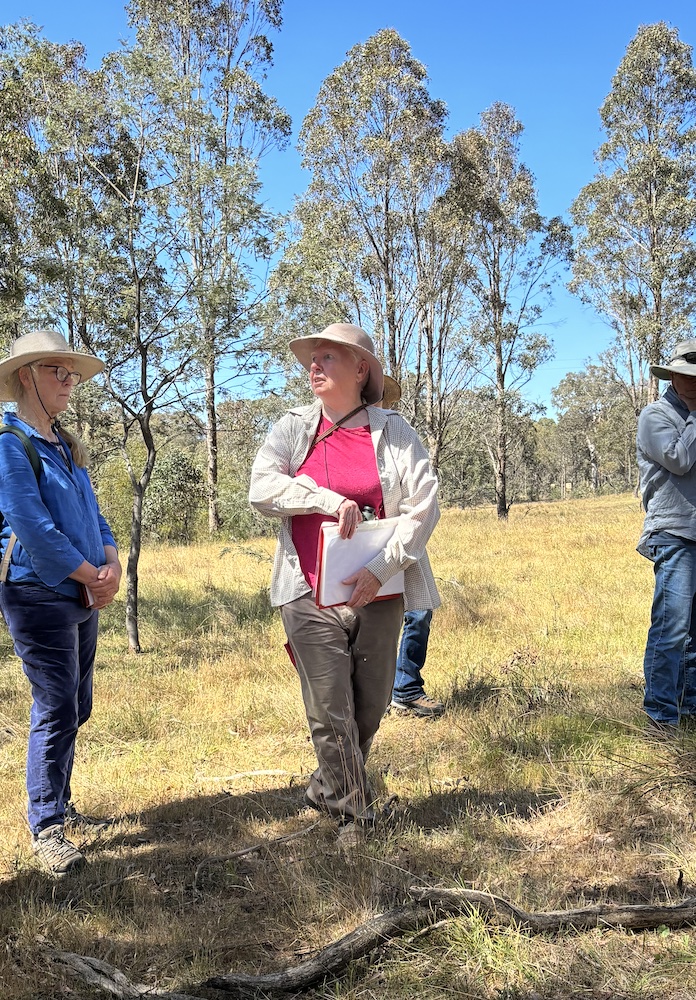
A Key Contributor to the Climate Ready Revegetation Project
Sue has played an integral role in the Climate Ready Revegetation (CRR) project since its inception in 2018. She has been a strong advocate for increasing genetic diversity in grassland species, helping Landcare embrace this innovative approach. Her expertise has shaped and guided the project, ensuring that decisions—both large and small—are informed by sound ecological principles. Sue’s ability to filter complex scientific information and keep the team focused on practical, achievable goals has been critical to the project’s success. Her leadership, mentorship, and sharp analytical mind have strengthened the CRR team and the broader Landcare community.
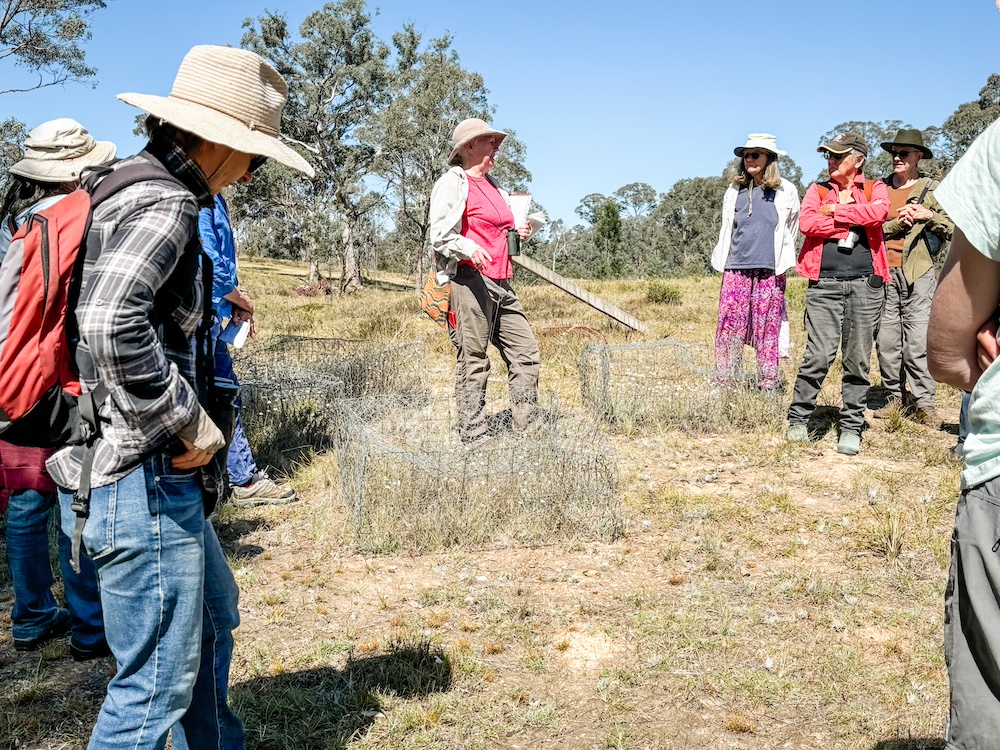
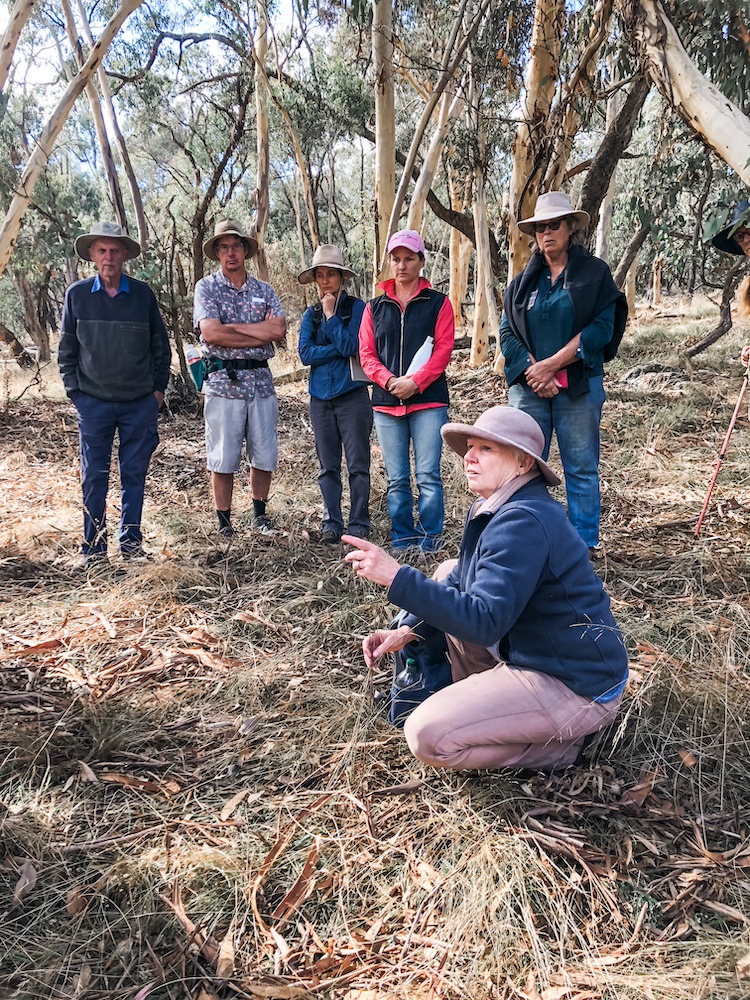
A Trusted Mentor and Friend
Colleagues describe Sue as a grounded, no-nonsense, and straight-talking mentor who is also warm-hearted and generous. As Elizabeth Goodfellow from the CRR team shares, “Sue’s approach is practical and direct, yet open and generous with her deep expertise. Time spent with Sue always leaves you with a sense of having learned something—not just about ecosystems, but about the resilience of nature and humanity’s role within it.”
MLG president Jacqui Stol was especially delighted: “When my CSIRO colleague Sue McIntyre bought a property with her husband Jon Lewis in our district 17 years ago, I knew this was a great opportunity to ask one of Australia’s most renowned ecologists to join Landcare. I am just so thrilled to see Sue’s tremendous contributions, and the many Landcare projects that have so significantly benefited from her expertise over the years, be recognised in this award.”
Sue’s scientific work and personal commitment to conservation are reflected in her property, Gang Gang. Alongside her husband Jon, she has applied rigorous ecological management techniques, including controlled burning, grazing exclusions, and meticulous weed control. Their efforts have created a landscape nearly indistinguishable from its natural state before settlement, and their property is now permanently protected under a NSW Biological Conservation Trust covenant.
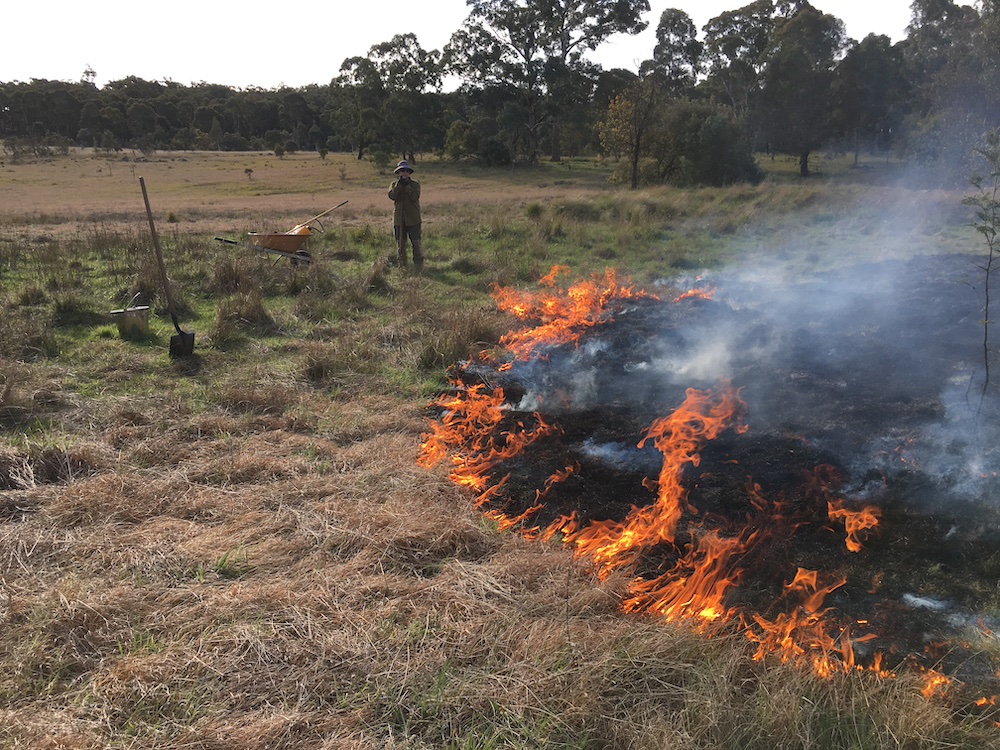
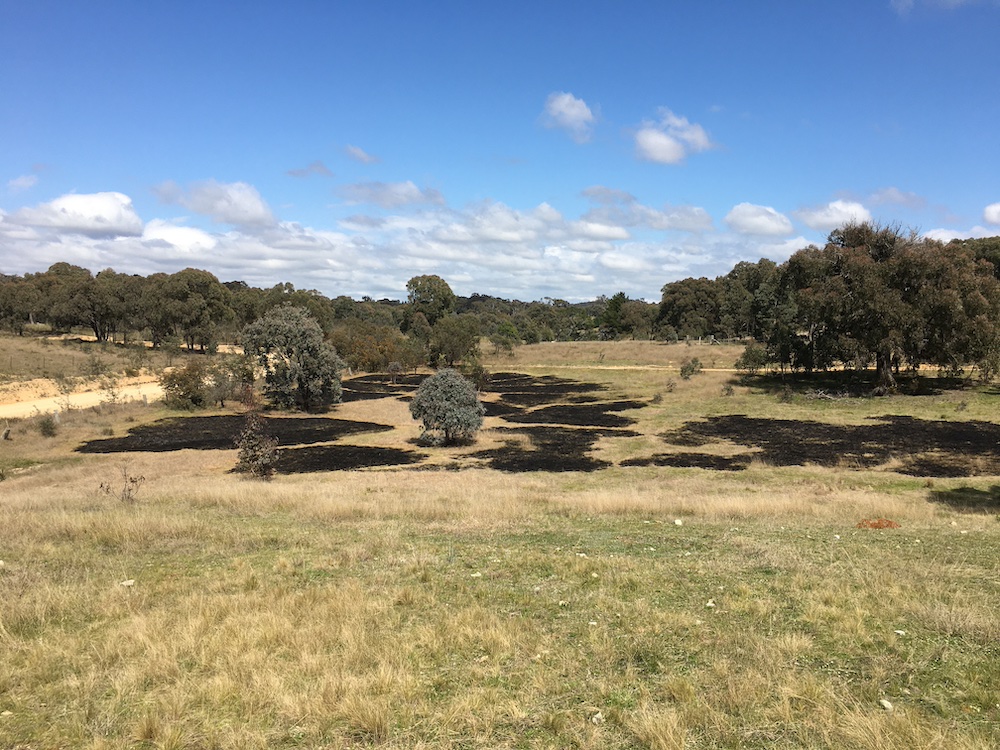
A Lasting Legacy
Sue’s dedication extends beyond her own property. She has shared her knowledge widely through Landcare talks, field days, and natural history columns in the Gundaroo Gazette. She has encouraged others to embrace conservation practices, hosting events such as a Weeding Masterclass and providing plant identification assistance to local landholders. Her research, published in multiple scientific journals, continues to inform and inspire conservation efforts across Australia.
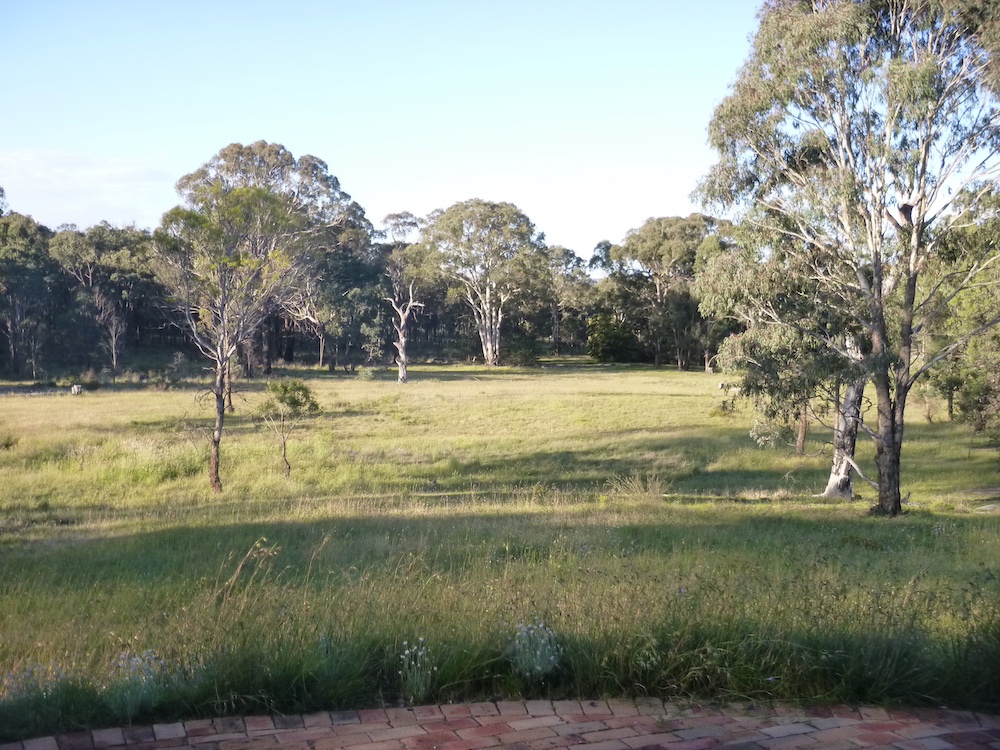
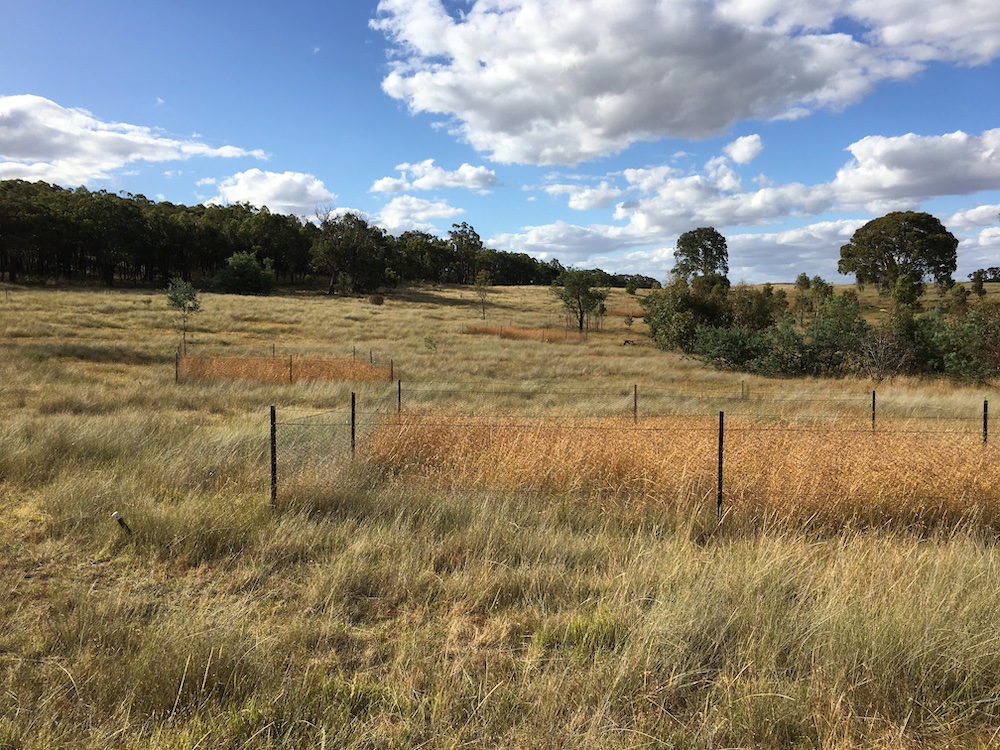
YAN is deeply grateful for Sue’s tireless contributions to Landcare and the broader environmental community. Her work has made a lasting impact on local conservation efforts, and this award is a well-deserved recognition of her extraordinary commitment.
Congratulations, Sue, on receiving the 2025 John Betts Landcare Award! Your passion, expertise, and generosity have enriched the Yass Area Network and will continue to inspire Landcarers for generations to come.
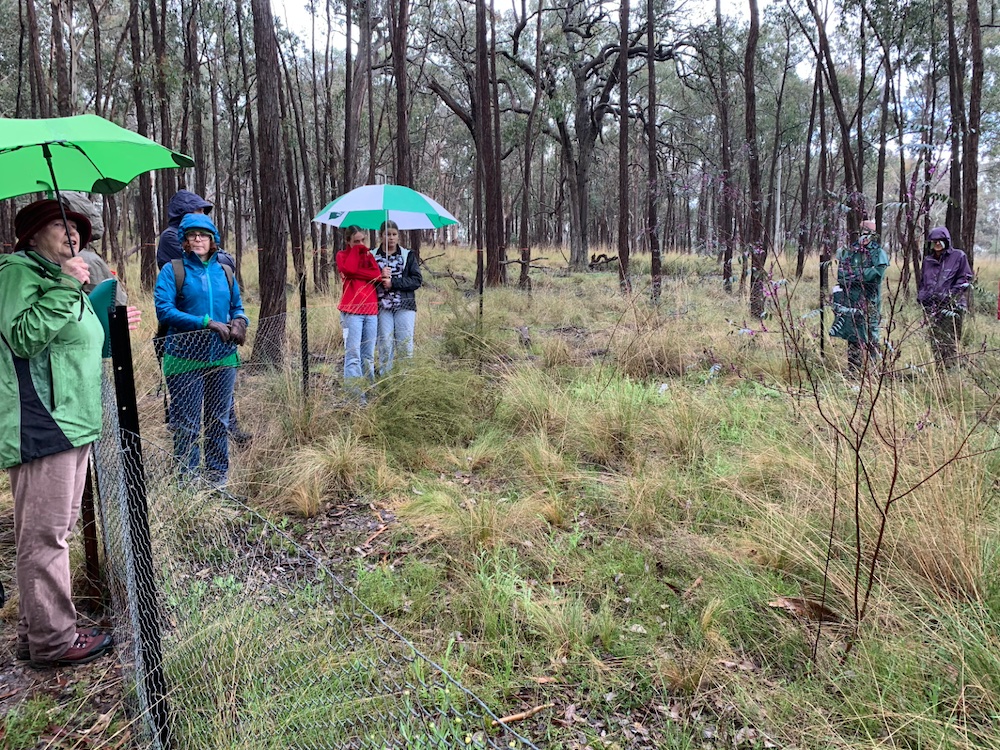
Award Presentation Event
Sue will be presented with the award on Thursday, 24 April at the Murrumbateman Landcare Group’s evening event. The evening will commence with dinner at 6:00 pm at the Murrumbateman Pub, followed by the award presentation and a butterfly talk by Dr Suzi Bond at 7:00 pm at the Murrumbateman Recreation Hall. We invite all members of the Landcare community to join us in celebrating Sue’s achievements and contributions.
About the JCH Betts Memorial Landcare Award
The JCH Betts Landcare Award commemorates the memory of John Betts, a foundation member of YAN, who made a major contribution over many years to Landcare in the Yass region. The award is made to a person who has made an outstanding and long-term contribution to Landcare. The winner is chosen by the YAN committee.
Writen by Sarah McGrath, YAN Local Coordinator
__________________________




